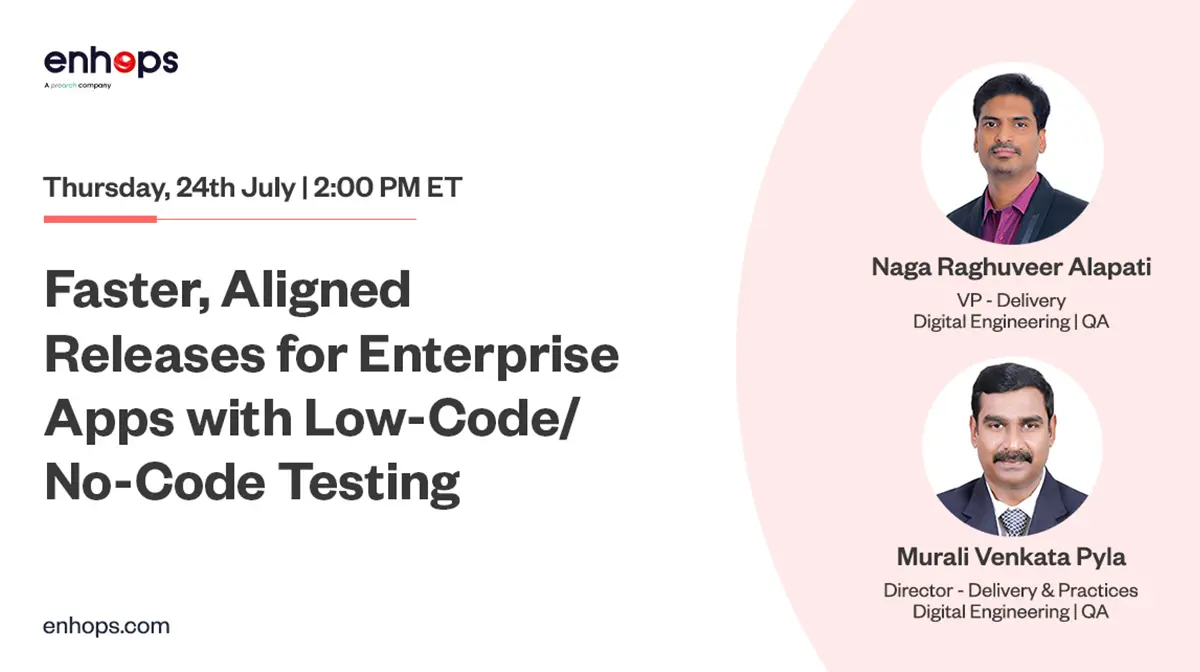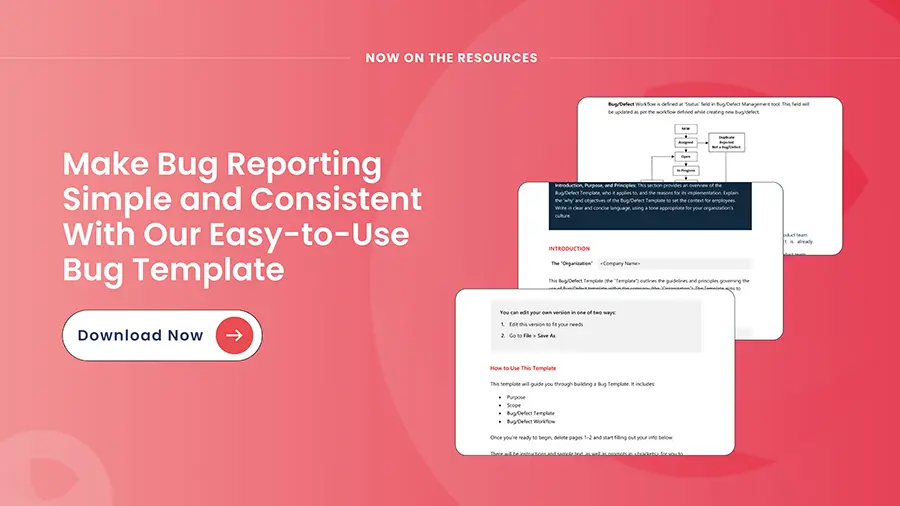Test automation has gained considerable attention as agile and DevOps practices are in vogue. Consequently, it is estimated that the global market size for test automation will reach USD 28.8 billion by 2024. There’s no doubt that test automation can be a powerful tool in the software development process. The same goes for leading cloud technology providers like Oracle, Microsoft, Google, and more.
Enterprises are seeking ways to accelerate their release cycles, reduce Turn Around Time (TAT), and enable continuous delivery in the Oracle Cloud. The first step in achieving these goals will be to automate testing and ensure that the applications are defended.
Automating repetitive and time-consuming tasks can help teams focus on more critical areas of the product. However, test automation has its challenges.
As far as the Oracle Cloud infrastructure is concerned, it is evident that Oracle Database, Fusion Middleware, and the like are ideal for creating and managing IT systems. Since Oracle is constantly expanding its cloud infrastructure, more and more enterprises will likely utilize the Oracle Cloud and its offerings.
It is, therefore, imperative that they ensure that their applications are compatible across the Oracle Cloud Infrastructure – something that test automation may be able to assist with.
It can be difficult to know where to start, what tools to use, and how to ensure that automation will save time in the long run. This guide will help you demystify Oracle Test Automation and start on the right foot.
Introduction to Oracle Test Automation
Oracle Test Automation is an invaluable method for streamlining the testing process and ensuring that your application meets its requirements. By automating the testing process, you can save time and money and reduce manual errors.
Furthermore, you can use Oracle Test Automation to develop a comprehensive and repeatable test suite to check your Oracle cloud suite’s functionality and performance. By using automated tests, you can quickly identify any errors in the application and take corrective action before they become major issues.
Oracle Test Automation can help you ensure that your cloud suite and associated application is fit for purpose and conforms to the highest standards. With Oracle Test Automation, you can test the application quickly and accurately, with minimal effort and cost.
Whether you’re just getting started with Oracle Test Automation or have been using it for years, this guide is designed to help you get the most out of the tool.
Challenges with Oracle Test Automation
When it comes to Oracle test automation, there is no denying the fact that it can be a daunting task. The complexity of the databases, the need for specialized skills and the level of effort required present numerous challenges. However, Oracle test automation can become a much more manageable task with the right approach.
By understanding the basics of Oracle test automation, understanding the various tools and technologies available, and leveraging the right resources, organizations can effectively and efficiently create automated tests that are reliable, repeatable and scalable.
With the right guidance and a commitment to successful Oracle test automation, organizations can reap the rewards of increased test coverage, quality assurance, and cost savings.
While oracle test automation can offer many benefits, some challenges are associated with this approach.
Here are some common challenges and potential solutions:
-
- Difficulty in defining clear and precise expected outcomes: One of the main challenges of oracle test automation is to define clear and precise expected outcomes. Ambiguity in requirements can lead to discrepancies between the expected and actual outcomes, resulting in false positives or negatives.
Solution: To address this challenge, software development teams should work closely with business stakeholders to ensure that the expected outcomes are well-defined and unambiguous. Requirements should be documented in detail, with clear acceptance criteria and success metrics.
-
- Maintaining oracle application suite accuracy: Another challenge is ensuring that the oracle itself is accurate and reliable. The automated tests will produce inaccurate results if the oracle is flawed or incomplete.
Solution: To maintain oracle accuracy, it’s important to regularly review and update the oracle suite to reflect changes in the software system or business requirements. The oracle should be validated and verified to ensure that it accurately represents the expected behavior of the system.
-
- Choosing the right automation tool: Selecting the right tool can be challenging, as there are many different tools available, each with its own strengths and weaknesses.
Solution: To choose the right automation tool, software development teams should consider factors such as the system’s complexity, the type of testing required, the level of technical expertise required, and the cost and availability of the tool. Teams should conduct thorough research and testing to select the tool that best meets their needs.
-
- Maintaining the test suite: Maintaining a large and complex test suite can be a challenge, as changes to the software system can require updates to the test suite.
Solution: To maintain the test suite, software development teams should establish a process for managing and updating test cases, including documentation, version control, and automated testing. Teams should also prioritize tests based on their criticality and frequency of use, to ensure that the most important tests are always up-to-date.
Best Practices for Performing Oracle Test Automation
Here are some best practices for performing oracle test automation:
- Start with a clear understanding of the expected behavior: The first step in oracle test automation is to define the expected behavior of the software system clearly. This requires close collaboration between the development team and business stakeholders to ensure that the requirements are well-defined and unambiguous.
- Select the right automation tool: Many automation tools are available, each with their own strengths and weaknesses. It’s important to select the tool that best meets the needs of your team and your software system. Consider factors such as the complexity of the system, the type of testing required, and the level of technical expertise required.
- Define and document test cases: To ensure that the testing process is efficient and effective, it’s important to define and document test cases. This includes identifying the steps required to execute the test, the expected outcome, and any pre- or post-conditions.
- Automate test execution: Automated testing can save time and increase accuracy by executing tests more quickly and consistently than manual testing. Automate test execution wherever possible to speed up the testing process.
- Regularly review and stay up to date with updates: Oracle follows a quarterly release cycle after adding new functionalities and enhancements to the Oracle Cloud product. So, Regular reviewing and testing for Oracle Cloud is important as it reflects the current state of the system and can also help identify any discrepancies or gaps in the system’s behavior.
- Prioritize testing based on risk and criticality: It’s important to prioritize testing based on the risk and criticality of the software system. This ensures that the most important tests are executed first and that any critical issues are identified and addressed quickly.
- Monitor and analyze test results: Monitoring and analyzing test results can provide valuable insights into the software system’s performance. Use this information to identify improvement areas and refine the testing process over time.
Tools Used in Oracle Test Automation
Oracle Test Automation can be daunting for those unfamiliar with the technology, but getting started doesn’t have to be difficult. With the proper tools and resources, you can demystify Oracle Test Automation and achieve success.
Popular tools used in Oracle Test Automation include Oracle Application Testing Suite (OATS), Oracle Unified Test Manager (OUM), Oracle Load Testing (OLT) and Ranorex.
- OATS is an integrated testing suite that offers a wide variety of functional testing capabilities such as regression, performance testing, and integration testing.
- OUM is a tool that helps you manage and track test scripts.
- OLT is a load testing tool that helps you simulate user interactions with an application.
- Ranorex is a powerful test automation tool. Ranorex test automation framework empowers development and testing teams to easily automate ERP software testing.
With the right tools and resources, Oracle Test Automation can be demystified and used to great effect.
Conclusion
Once you’ve decided to take the plunge and implement Oracle Test Automation in your organization, the key to success is to take it one step at a time. Start small by automating a few key tests and build on that success. Doing so will help you to gain the confidence and skills necessary to move forward and to eventually create an automated test suite that will save time and money.
By integrating our feature-rich codeless test automation support for Oracle, we ensure continuous delivery and provide a high level of flexibility and customization to meet the specific testing needs of Oracle applications.
Are you looking for a ready-to-go, no-code framework to automate Oracle test processes?



